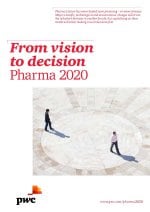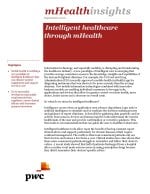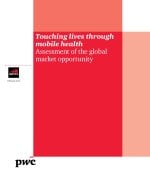Life Sciences publications
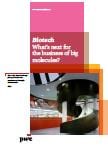
Biotech ― What’s next for the business of big molecules
How is the biotech industry faring in the current economic and scientific environment?
There’s bad news and good: productivity’s still low, and money scarce, but the industry’s no longer trying to ‘go it alone’. A growing number of biotech and pharma companies are joining forces to tackle the challenges they face with increasingly creative alliances with new partners and in new territories.

10 Minutes on medical innovation
The way we assess value in medical technology is changing radically. Payers are refusing to pay for incremental innovations that do not significantly improve health or reduce cost. The faster, better, smaller, cheaper advances so common in consumer electronics foreshadow the future of medical technology.

Owning the Disease – A new transformational business model for healthcare
The convergence of expanded access, lower reimbursement rates, higher velocity of innovation, diminished pools of venture capital, the advent of personalized care and a growing demand for improved patient outcomes has created ripples that already are altering he economics and operating dynamics of healthcare.
To survive the coming storm, biomedical companies must build new models of innovation that are anchored in consumer-centric disease solutions rather than the traditional R&D department approaches.
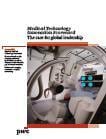
Medical Technology Innovation Scorecard – The race for global leadership
PwC’s Medical Technology Innovation Scorecard:
The race for global leadership assesses nine countries’ capacity and capability for medical technology innovation: Brazil, China, France, Germany, India, Israel, Japan, United Kingdom, United States.
| Medical Technology Innovation Scorecard – The race for global leadership PwC’s Medical Technology Innovation Scorecard: The race for global leadership assesses nine countries’ capacity and capability for medical technology innovation: Brazil, China, France, Germany, India, Israel, Japan, United Kingdom, United States. |
| Medical Technology Innovation Scorecard – The race for global leadership PwC’s Medical Technology Innovation Scorecard: The race for global leadership assesses nine countries’ capacity and capability for medical technology innovation: Brazil, China, France, Germany, India, Israel, Japan, United Kingdom, United States. |
| Medical Technology Innovation Scorecard – The race for global leadership PwC’s Medical Technology Innovation Scorecard: The race for global leadership assesses nine countries’ capacity and capability for medical technology innovation: Brazil, China, France, Germany, India, Israel, Japan, United Kingdom, United States. |
| Medical Technology Innovation Scorecard – The race for global leadership PwC’s Medical Technology Innovation Scorecard: The race for global leadership assesses nine countries’ capacity and capability for medical technology innovation: Brazil, China, France, Germany, India, Israel, Japan, United Kingdom, United States. |

Healthcare Unwired – New business models delivering care anywhere
Mobile devices are the most personal technology that consumers own, and they have the potential to enable health and wellness to be delivered through mass personalization. However, real value will need to be demonstrated to consumers and physicians in order for adoption to occur. New business models will continue to evolve, but PwC sees these fit into three main categories: operational / clinical business model, consumer products and services model, and infrastructure business models.
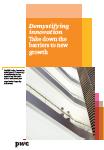
Demystifying Innovation – Take down the barriers to new growth
Innovation is high on the agenda for 2011 in virtually all industries. The accelerating pace of change is a major reason why CEOs polled for PwC’s 14th Annual Global CEO Survey believe innovation is now as important to growing their businesses as expanding in existing markets.

The New Gold Rush – Prospectors are hoping to mine opportunities from the health industry
Healthcare is expected to reach nearly 20% of the US gross domestic product by 2019 and is bursting with new products and services. PwC surveyed US consumers and found they would be willing to spend more than $13 billion a year of their own money on those new services. It’s the promise of those new products and services that is enticing more and more businesses to turn to the US health system as an opportunity for innovation, differentiation, and profits.
Contact us

